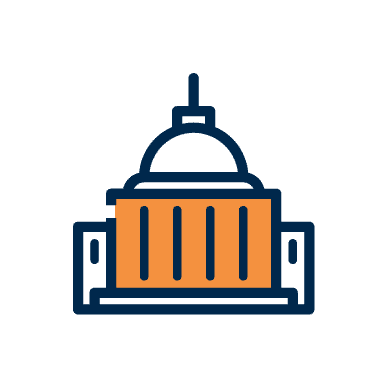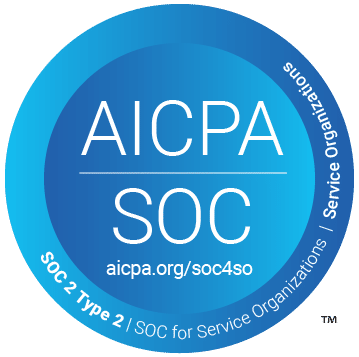When most people think about pharmaceutical fraud, they may envision pharmacy staff shorting a prescription to pocket a few pills and then overcharging the patient, or taking pharmacy inventory to sell on a shady internet site. However, pharmacy-related fraud can take more nuanced and lucrative forms. With the emergence of large pharmacy chains, the use of pharmacy benefit management companies by managed care organizations, coverage of expensive drug treatment programs and the growth of government-funded pharmacy programs such as Medicare Part D, the opportunity for billing fraud has skyrocketed. These risk areas have received much attention by regulators and industry watchdogs. However, a small but highly remunerative niche for pharmaceutical fraud is also under increased scrutiny – drug compounding.
Overview of Compounded Drugs
The vast majority of patients are prescribed medications packaged and shipped ready for sale to consumers. However, there are instances when commercially available medications will not meet patient needs and a customized medication must be developed. This can occur for a number of reasons, including:
- There is no commercially available product that meets the patient medication requirements;
- The patient has physical limitations that prevent ingesting a medication in pill form; or
- The patient is allergic to an ingredient in the commercially available form of the medication.
Pharmacists and physicians create these compounded medications by combining, mixing, or altering drug ingredients. Compounded drugs can take many forms including topical gels and creams, intravenous drugs, injectable drugs and drugs that can be taken orally. The necessary ingredients are ordered from compounding supplier.
Compounded Drug Safety Concerns
As stated in a recent report by the U.S. Food and Drug Administration (FDA), there are safety and effectiveness concerns related to compounded drugs. Compounded drugs are not FDA-approved, so they are not evaluated by the FDA for safety, effectiveness, or quality. The FDA does not oversee the day-to-day operations of most compounding pharmacies or ensure compliance with FDA’s current good manufacturing practice requirements. In addition, quality standards for compounded drugs are generally lower than for FDA-approved drugs; therefore, compounded drugs can pose increased safety risks, such as being the wrong potency (i.e., too strong or too weak), being contaminated, or being ineffective.
In 2012, a Massachusetts pharmacy shipped a contaminated injectable compounded drug to pharmacies in 20 states. The contaminated drugs were injected into patients’ spines and joints. As a result, more than 750 people in 20 states developed fungal meningitis and more than 60 people died. It was the most serious in a long history of serious adverse events associated with poor-quality compounded drugs. This event resulted in decisive action by Congress in 2013 to significantly increase regulation and oversight of this area of the pharmaceutical industry with the passage of the Compounding Quality Act to clarify and enhance the public health protections applicable to compounded drug products.
Increased OIG Scrutiny of the Drug Compounding Market Segment
While the FDA was focused on drug safety and industry oversight, the OIG was tracking the potential fraud that compounding could drive. Since the enactment of Medicare Part D (which offers outpatient drug coverage to Medicare recipients) in 2006, the OIG had noted a significant increase in compounded drug costs. In 2016, the OIG issued a report highlighting these growing concerns related to Medicare program costs. An even more recent 2018 HHS OIG report made it clear that healthcare fraud involving compounded products remains a significant concern for federal healthcare programs, as well as for private insurance plans. The OIG said that it prepared this 2018 report as a result of a “dramatic increase in Medicare Part D spending for compounded topical drugs, the emergence of fraud cases, and safety concerns.”
The OIG’s 2018 Report on Questionable Billing for Compounded Topical Drugs
The OIG’s 2018 report on summarized the outcome of its study of the billing practices of 2,388 pharmacies, which billed 93 percent of all compounded topical drugs in 2016, and it concluded that 547 pharmacies had questionable billing for those drugs in 2016 indicating possible fraud or abuse related to compounded topical drugs in 2016. These pharmacies billed Part D a total of $300.3 million for compounded topicals in 2016 which represented more than 90 percent of all Part D billing for these drugs nationwide. As noted in this 2018 report, between 2006 and 2015, Part D spending for compounded drugs grew from $70.2 million to $508.7 million, an increase of 625 percent. Part D spending for compounded topical drugs grew at a much faster rate than spending for all Part D drugs and for other types of compounded drugs. From 2010 to 2016, spending for compounded topicals increased 2,353 percent while spending for all Part D drugs increased 89 percent and spending for other types of compounded drugs grew 225 percent. The OIG report also identified 124 prescribers of “concern” because each of them had ordered more than $250,000 of compounded topicals dispensed by the pharmacies the OIG identified as having questionable billing, for a total of $73.1 million. This amount accounted for almost a quarter – 23 percent – of all Part D spending for compounded topical drugs in 2016.
The main drivers of the spending increase appear to be:
- The substantial increase in the average cost per drug. In 2010, the average Part D cost per compounded topical was $54, but by 2016 it was $422. This increase of 676 percent significantly outpaced the cost increases for all drugs (41 percent) and for other types of compounded drugs (79 percent).
- The increase in the number of beneficiaries receiving compounded topicals and growth in the number of compounded drugs billed to Medicare Part D. The number of beneficiaries increased 167 percent from 2010 to 2016, and the number of billed prescriptions for compounded topical drugs increased 216 percent.
Examples of Compounding Fraud
Compounding pharmacy fraud can take many forms. Some of the most common include:
- Defrauding government insurance programs by overbilling for compounded drugs;
- Billing for compounded products that are identical to over-the-counter or commercially-available medications;
- Paying kickbacks or offering inducements to chiropractors, podiatrists, pharmacists, and other healthcare providers to prescribe unnecessary compounded medications;
- Falsifying pharmaceutical or financial records to inflate the cost charged to insurance programs – for example by inflating the AWP (Average Wholesale Price).
As shown in a very recent case filed by the DOJ in November 2021, potential fraud is not limited to prescribers and pharmacies. In United States ex rel. Hueseman v. Professional Compounding Centers of America, Inc., No. 5:14-cv-212 (W.D. Tex.), the DOJ filed a complaint under the False Claims Act against a company that sells active pharmaceutical ingredients and other products and services to compounding pharmacies. The complaint alleges that PCCA reported fraudulent and inflated Average Wholesale Prices (AWPs) for its ingredients that bore no relationship to the actual prices at which it sold those ingredients to its pharmacy customers, thereby causing those pharmacies to submit inflated compound prescription claims to TRICARE. As described in the DOJ press release, the complaint alleges that PCCA marketed its inflated AWPs, the resulting profit potential and compound formulas containing high AWP ingredients as inducements to pharmacies to purchase PCCA ingredients. The complaint also alleges that PCCA offered additional inducements to pharmacy customers, such as annual all-inclusive travel packages, in exchange for ingredient purchases and purchase commitments.
Conclusion
Compounding fraud – and its costs to both federally funded health care programs and commercial insurance plans – remains pervasive five years after the Department of Justice began issuing reports outlining it concerns. In 2021, the Justice Department has continued to file complaints and win convictions against compounding pharmacies, prescribers and suppliers who defraud public and private health insurance programs. However, with the significant payout possible from this type of pharmacy fraud, the number of pharmacies and prescribers that the OIG has identified as engaging in concerning behavior would indicate that the financial benefit still outweighs the risk for many, even though civil penalties run in the millions and jail time is significant.


































